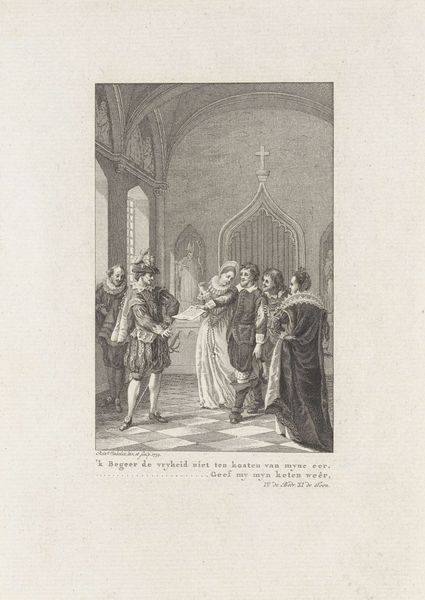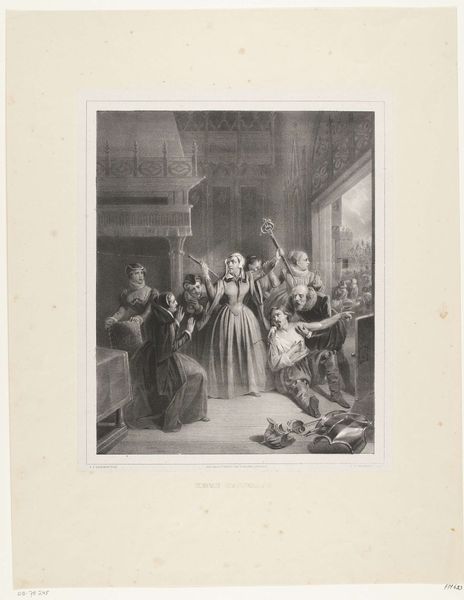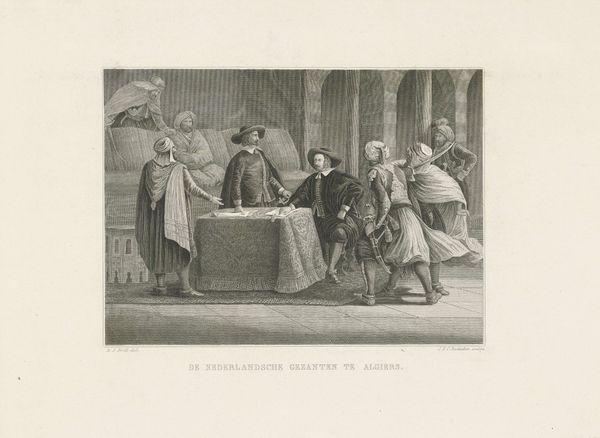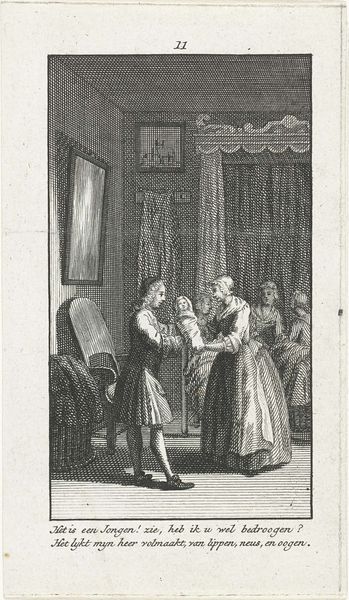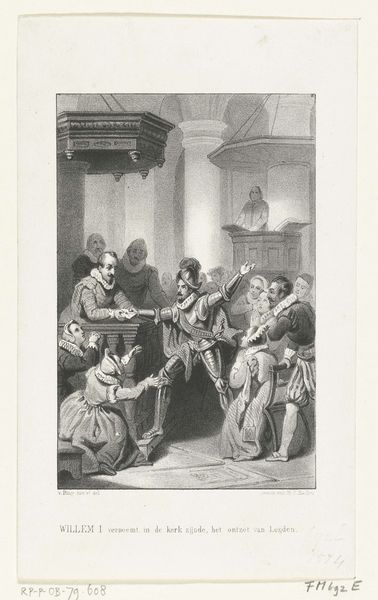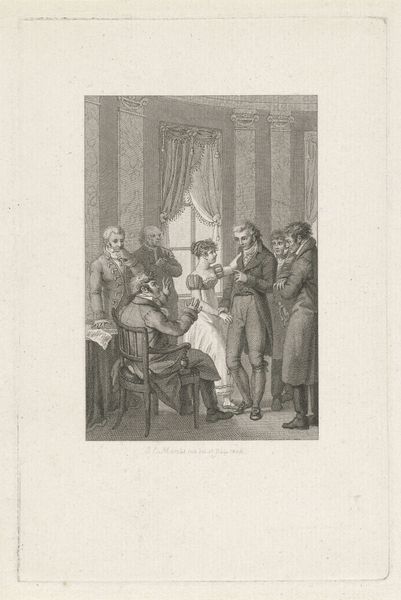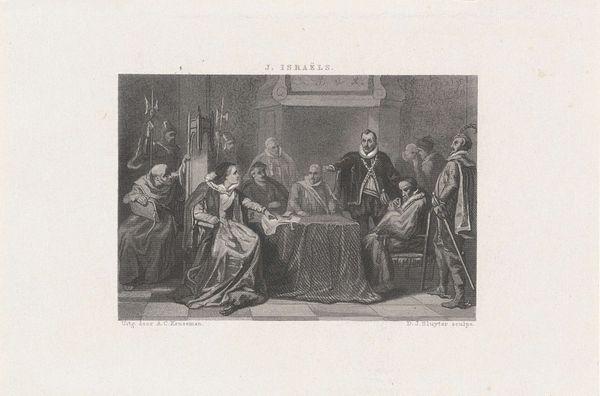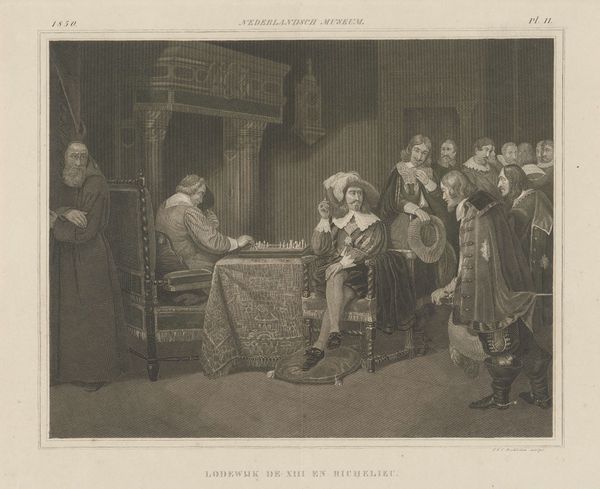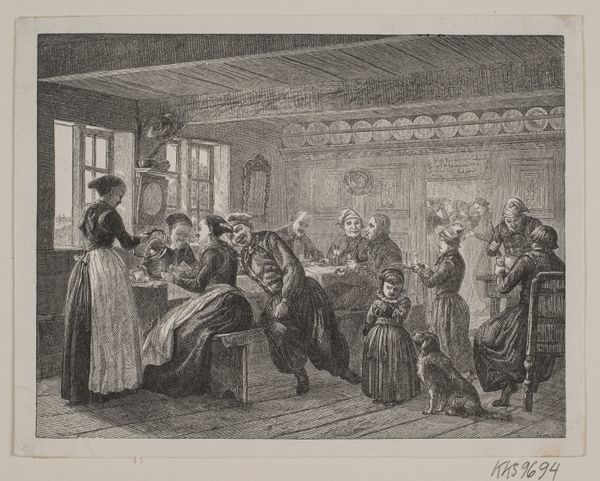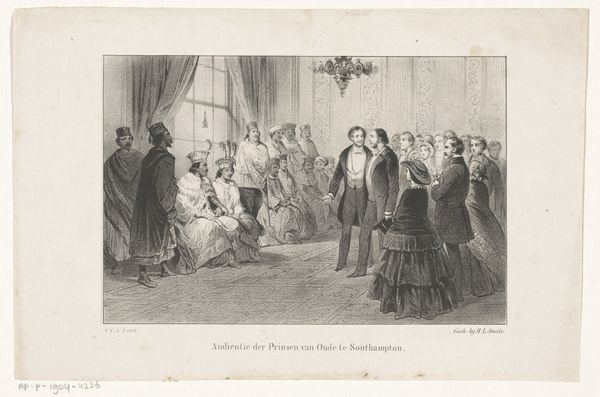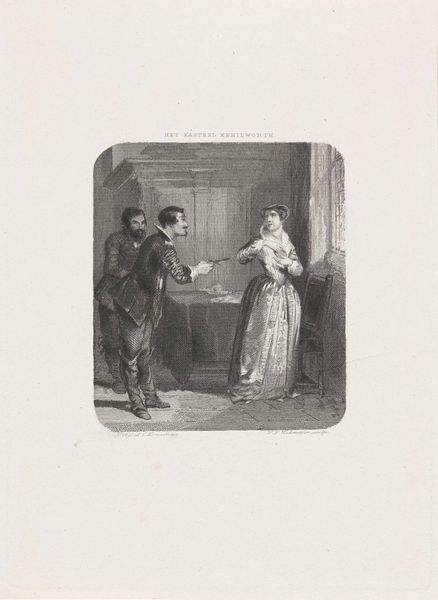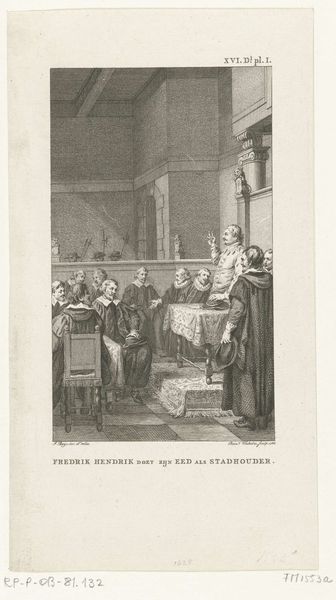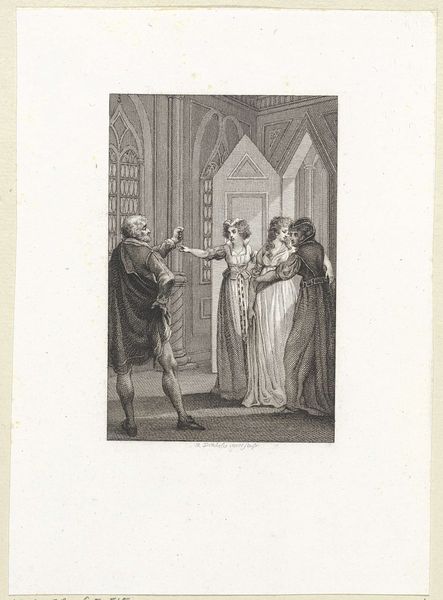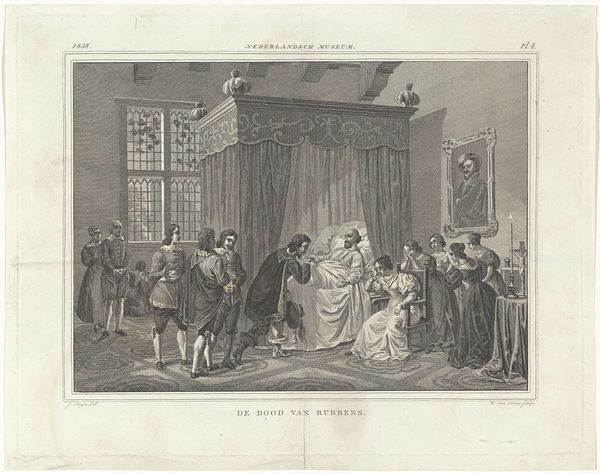
print, engraving
#
narrative-art
#
dutch-golden-age
# print
#
old engraving style
#
figuration
#
historical photography
#
19th century
#
genre-painting
#
history-painting
#
engraving
Dimensions: height 320 mm, width 502 mm
Copyright: Rijks Museum: Open Domain
Editor: This is "Het verbond der edelen, 1565" by Adolf Carel Nunnink. It's an engraving, probably from the 19th century. I’m struck by how theatrical it feels, almost like a stage play frozen in time. What story do you think it’s trying to tell? Curator: It's more than just a story; it’s a potent piece of historical narrative-making. Consider the context: the etching portrays the "Compromise of Nobles," a pivotal moment of resistance against Spanish rule. What we see here isn't just figures in costumes, but rather, a carefully constructed image intended to stir patriotic sentiment, long after the actual event. Editor: So, you're saying it’s not necessarily an accurate depiction, but more of a…representation? Curator: Precisely. Nunnink creates an image that speaks to Dutch identity and resistance. Think about who this print was intended for. Likely not the elites, but a broader public audience, to cement ideas of national identity and protest against perceived oppression. Does the setting, the gathering itself, suggest anything to you about power, resistance? Editor: It definitely feels like a secretive meeting, planning something big. The man standing seems to be giving a speech… like he's inspiring the others. Is it safe to say this artist intended to glorify this moment in history? Curator: It's definitely a romanticized portrayal. But the act of romanticizing serves a purpose: to embolden and unite people under a shared banner. This piece can invite reflection on how historical narratives are formed, controlled, and weaponized in art, as well as in the dominant cultural narrative. Editor: I never thought of it that way. It really shifts how I see historical art. I was so focused on the aesthetics, I didn’t really dig deep into what it meant for society at the time. Curator: Exactly! It's about peeling back the layers to understand the artist's intentions and the impact on its intended audience. Every piece can become a key to unlock social and historical understanding.
Comments
No comments
Be the first to comment and join the conversation on the ultimate creative platform.
